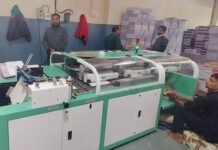
Quintype, a digital publishing software company headquartered in Bengaluru, offers a complete suite of digital publishing solutions that it says are powerful, easy to use, and dependable. It helps publishers in creating, engaging, and monetizing their web content. The company also keeps publishers up to scratch with the trends and updates that can impact their web traffic.
On 17 August 2021, Quintype organized a webinar on the core web vital updates from Google. In this webinar, Ramalingam S, the company’s VP of Quality, Anish Balan, VP of client services, and Jeevan Kishore, lead engineer at Quintype, discussed the importance of understanding core web vitality. Core web vitals are the factors that Google measures for its users to check the score page experience. They focused on how valuable a core web vital is for any digital publisher.
The webinar tried to make publishers understand how to improve their page rank and overall user experience through core web vitals. The primary factors included in core web vitals are site interactivity, loading experience, and visual stability. With these, publishers get complete access to their content and can receive the feedback of the page.
The three essential metrics explained by Quintype in the webinar-
- Largest Contentful Paint (LCP)– – LCP is a factor that checks the time a page takes to load. This means that the content will be more visible to the visitors as fast as the page loads. If the LCP range or page loading time is below 2.5 seconds, it’s good to rank on Google, and above 4 seconds, it will slow down the server response times, render-blocking javascript and CSS, slow resource load times, and third party javascript.
- First Input Delay (FID)– FID measures the time from when a user first interacts with a page, and the page starts processing it. If there is an input delay of more than 300 milliseconds, it may take visitors to another page, which may decrease the page’s interactivity. For any URL, Google decides how much time it takes for processing, and if it is below 100 milliseconds, Google considers it as a good page.
- Cumulative Layout Shift (CLS) is one of the most challenging factors for developers – a measure of the largest burst of layout shift scores for every unexpected layout shift that occurs during a page’s entire lifespan. If the page is loading with a layout shifting of below 0.1, it gives a good user interface. The lower the disturbance to the user, the better the CLS score, and the better it will rank on Google.
While explaining the metrics of core web vitals, Balan said, “Content is king, so it’s important to check for core web vitals for better ranking of a page. Ranking decides whether the user is getting actual content or not or if the page is loading faster. At the time of loading, make sure whatever the content is uploaded on the website, whether they are images or texts or any background image, are lighter in size, increasing the loading speed. The loading speed of the most important pages should be faster, and the rest can be a bit slower.”
Jeevan concluded the conversation on core web vitals on the quality of a page. He said, “In terms of quality, PHP is very much impacted by it. For example, if we put a standard dimension as 650*400 pixels, its loading will be faster. The image processing team at Quintype also ensures that the right dimension of an image is important for page quality.”















